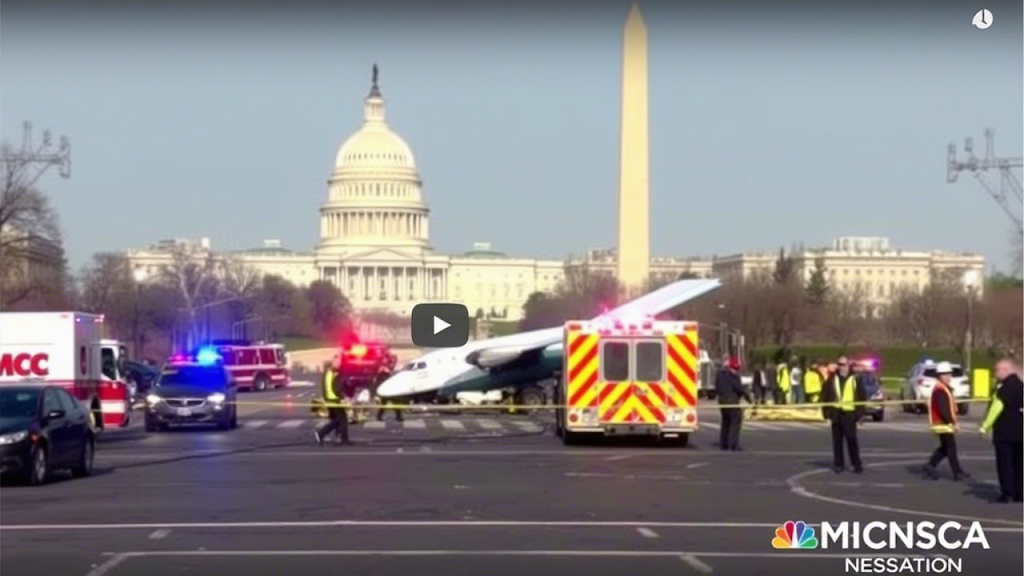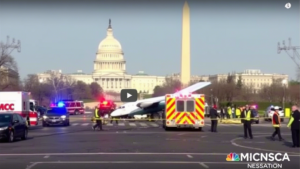Washington D.C. Midair Collision: Tragedy Over the Potomac
The 1993 Washington D.C. Midair Collision: A Watershed Moment in Aviation Safety
Introduction
On January 13, 1993, the skies over Washington D.C. witnessed one of the most significant aviation accidents in American history. A midair collision between a civilian Cessna 150 light aircraft and a U.S. Army UH-60 Black Hawk helicopter over the Potomac River resulted in six fatalities and raised serious questions about airspace management, military-civilian coordination, and aviation safety protocols. This tragic event would become a catalyst for significant changes in American aviation policy and air traffic control procedures.
Background and Context
The Washington D.C. Airspace
Washington D.C.’s unique airspace restrictions, stemming from its status as the nation’s capital, created a complex environment for air traffic control. The area around the Potomac River has always been particularly challenging due to:
- Proximity to three major airports (Reagan National, Dulles, and BWI)
- Military flight operations
- Restricted airspace around federal landmarks
- High volume of both commercial and private air traffic
The Aircraft Involved
UH-60 Black Hawk Helicopter:
– Registration: HH-60 #87-26000
– Operator: U.S. Army 12th Aviation Brigade
– Crew: 4 military personnel (2 pilots, 2 crew chiefs)
– Mission: Routine training flight
Cessna 150:
– Registration: N49514
– Operator: Private civilian aircraft
– Occupants: Flight instructor and student pilot
– Mission: Instructional flight
The Collision Event
Timeline of the Disaster
1:27 PM EST: The Cessna 150 departs from Washington Executive Airport/Hyde Field (W32) in Clinton, Maryland, heading southeast along the Potomac River.
1:30 PM: The Black Hawk helicopter departs from Davison Army Airfield at Fort Belvoir, Virginia, conducting a low-level navigation training exercise.
1:35 PM: Both aircraft enter the same airspace near the Woodrow Wilson Bridge, approximately 1,200 feet above the river.
1:36 PM: Midair collision occurs at coordinates 38°47′30″N 77°01′48″W. The Cessna’s right wing strikes the Black Hawk’s rotor system.
– Eyewitness account from Virginia shoreline
Immediate Aftermath
Both aircraft lost structural integrity immediately after impact:
- The Cessna broke apart in midair, scattering debris over 500 yards
- The Black Hawk’s tail rotor assembly failed, leading to uncontrolled descent
- Both aircraft crashed into the Potomac River within seconds
- Emergency response initiated within 2 minutes
Rescue and Recovery Operations
The complex rescue operation involved:
- U.S. Coast Guard vessels from Station Washington D.C.
- D.C. Fire and EMS Department water rescue teams
- National Park Service Police
- FBI evidence recovery divers
Challenges Faced
– 42°F water temperature with strong currents
– Limited visibility in murky river water
– Hazardous aircraft fuel contamination
– Security concerns due to sensitive military equipment
Despite rapid response, all six occupants from both aircraft were pronounced dead at the scene. Recovery of wreckage took 11 days using specialized crane barges.
Investigation and Findings
National Transportation Safety Board (NTSB) Report
The 18-month investigation revealed multiple contributing factors:
| Factor | Details |
|---|---|
| Air Traffic Control | Lack of radar coverage below 1,500 feet in collision area |
| Pilot Awareness | Cessna crew failed to maintain visual separation |
| Military Procedures | Black Hawk’s flight plan not coordinated with civilian ATC |
| Equipment | No collision avoidance systems on either aircraft |
Key Recommendations
The NTSB issued 23 safety recommendations, including:
- Mandatory transponders for all aircraft in dense airspace
- Improved military-civilian air traffic coordination
- Enhanced radar coverage over critical waterways
- Accelerated implementation of TCAS (Traffic Collision Avoidance Systems)
Legacy and Safety Improvements
Regulatory Changes
The collision directly influenced:
- FAA Advisory Circular 90-48D (1999) on “Pilot Responsibility in Conflict Avoidance”
- Military Flight Operation Procedures (AR 95-1 revision)
- Implementation of Washington ADIZ (Air Defense Identification Zone) in 2003
Technological Advancements
– Widespread adoption of TCAS II in commercial and military aircraft
– Improved radar coverage through ASDE-X systems
– Mandatory Mode C transponders in Class B airspace
– Former NTSB Chairman James Hall
Memorials and Remembrance
The six victims are memorialized through:
- Army Aviation Heritage Foundation scholarships
- Flight Safety Foundation annual symposium
- Memorial plaque at Mount Vernon Trail overlook
Conclusion
The 1993 Potomac midair collision stands as a tragic milestone in aviation history. Its legacy persists in today’s enhanced safety protocols, serving as a somber reminder of the constant vigilance required in managing complex airspace. While the human cost was devastating, the resulting improvements have undoubtedly prevented countless subsequent tragedies, making American skies among the safest in the world for both military and civilian aircraft.





